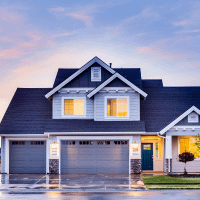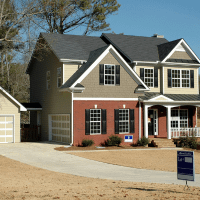Introduction
When house hunting, selecting the right neighbourhood is crucial as it significantly impacts property value, lifestyle, and long-term satisfaction. Key factors to consider include neighbourhood walkability, safety, environmental risks, and community amenities. These elements affect the immediate living experience and the property’s future resale value.
Walkability and Accessibility
Walkability, a critical factor in determining house prices, is a significant consideration for potential homeowners and real estate investors. Areas with high walkability metrics, characterised by increased net residential density, higher intersection density, and abundant facility density, foster a community where residents can easily navigate their surroundings on foot. This not only enhances the sense of community and accessibility but also leads to increased property values. The numerous walking opportunities and direct access to a variety of amenities, including shops, restaurants, and services, significantly improve the quality of life for residents, as supported by the research of Kim et al. (2023).
Essential amenities such as parks, schools, and shopping centres within a short distance significantly enhance the appeal of a neighbourhood. These features not only cater to the everyday needs of residents but also create an inviting atmosphere that fosters social interactions and outdoor activities. Access to parks offers recreational space for families, while proximity to schools is a significant consideration for families with children. The convenience of having shopping centres within easy reach further solidifies a neighbourhood’s attractiveness, as it reduces reliance on vehicles and promotes a more sustainable lifestyle. Research conducted by Guo et al. (2023) highlights that such amenities contribute to an enhanced sense of belonging and community engagement, factors that are highly sought after by homebuyers.
Safety and Security
For individuals looking to purchase a home, safety remains a top priority. The presence of gated and guarded neighbourhoods not only enhances the appeal of a property but also provides a sense of privilege and security. These communities often feature landscaped compounds that beautify the environment and foster a sense of exclusivity. Such features appeal to potential buyers who prioritise a safe living environment. This heightened sense of security can increase property values, making these neighbourhoods more attractive to homebuyers willing to invest in a residence that offers protection and a sense of exclusivity.
In addition to gated communities, other factors contribute to the desirability and value of a neighbourhood. Areas with lower foreclosure rates are generally perceived as more stable, an essential consideration for homebuyers. Furthermore, neighbourhoods with a reputation for high student performance in local schools are often associated with elevated house prices. This correlation underscores the importance of a stable environment not only for the immediate safety of residents but also for the educational opportunities available to families. This sense of stability and the promise of good education can enhance buyer confidence, leading to higher demand and, consequently, elevated property prices.
Environmental Risks
Environmental factors, particularly those related to flood and sediment risks, play a significant role in real estate valuation and investment decisions. Properties situated in regions with a high susceptibility to flooding typically experience a decrease in market value, as potential buyers and investors are wary of the financial implications associated with flood damage, insurance costs, and possible loss of property. This depreciation, however, tends to be less severe for higher-priced properties located in areas that are categorised as having a moderate risk of flooding. In these cases, the premium associated with the property’s initial market value can mitigate some of the adverse effects stemming from the risk considerations, allowing such properties to retain more of their value compared to less expensive homes in similarly risky areas.
In Addition to flood risks, other environmental hazards, such as sedimentation, must be considered when assessing property value. The presence of sediment can impact a location’s aesthetic appeal, infrastructure, and usability. These factors contribute to a complex decision-making process for potential homeowners and investors.
Simultaneously, it is crucial to balance the allure of attractive neighbourhood features, such as high walkability scores, with the potential risks posed by environmental hazards. Walkability often enhances a property’s desirability, offering residents convenient access to amenities, public transportation, and social interactions. However, these benefits must be carefully evaluated against the environmental risks that could compromise safety and investment return. The interplay between desirable urban features and environmental liabilities requires a thorough analysis to ensure informed decisions when considering property investments in areas at risk of environmental hazards. This detailed analysis will make potential homebuyers feel informed and prepared to make the best decision for their future home.
Community and Lifestyle
The characteristics of a neighbourhood, particularly its property ownership structure, significantly affect property values. For instance, neighbourhoods with freehold tenure are often seen as more desirable because they provide individuals with complete ownership rights over their property. This ownership implies a sense of permanence and fosters a perception of stability within the community. As Tan documented in 2011, the benefits associated with ownership contribute to an overall increase in property values, as potential buyers view such properties as more appealing due to the long-term commitment they represent. Property security in a stable environment can enhance buyer confidence, leading to higher demand and, consequently, elevated property prices.
In addition to ownership type, the ability of a neighbourhood to cater to the lifestyle and preferences of potential buyers plays a crucial role in determining property values. When a neighbourhood provides a harmonious living environment, with amenities and infrastructure that align with the needs and desires of its residents, it becomes increasingly attractive to buyers. Factors such as access to parks, quality schools, shopping facilities, and public transport can significantly influence a buyer’s decision. As outlined by Tan in 2011, neighbourhoods that are thoughtfully designed to support their residents’ lifestyles offer immediate benefits and enhance the overall quality of life, making properties in such areas more valuable. The interplay between community features and individual preferences has become fundamental to real estate considerations, impacting ownership satisfaction and financial investment.
Conclusion
While it is essential to consider various critical factors when making a home purchase, it is equally important for individuals to reflect on their personal preferences and lifestyle needs, as these elements can significantly influence the decision-making process. Different buyers have unique priorities that can shape their choices in meaningful ways. For example, some individuals may place a high value on being close to cultural or historical sites, as this proximity can enhance their daily experiences, providing easy access to museums, theatres, and other enriching environments that offer opportunities for personal enrichment and entertainment. On the other hand, some buyers may prioritise a neighbourhood’s aesthetic qualities, seeking visually appealing, well-maintained, and conducive to their tastes in architecture and landscaping.
Such appealing surroundings can enhance one’s sense of community and overall satisfaction with their living environment. Ultimately, striking a balance between objective factors, such as location, price, and amenities, alongside subjective priorities that reflect personal tastes and lifestyle considerations is crucial. Engaging in this comprehensive evaluation process can lead buyers to a more fulfilling and satisfying home purchase, ensuring they find a space suited to their practical needs and aligned with their aspirations and lifestyle preferences.






